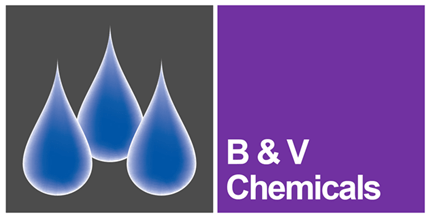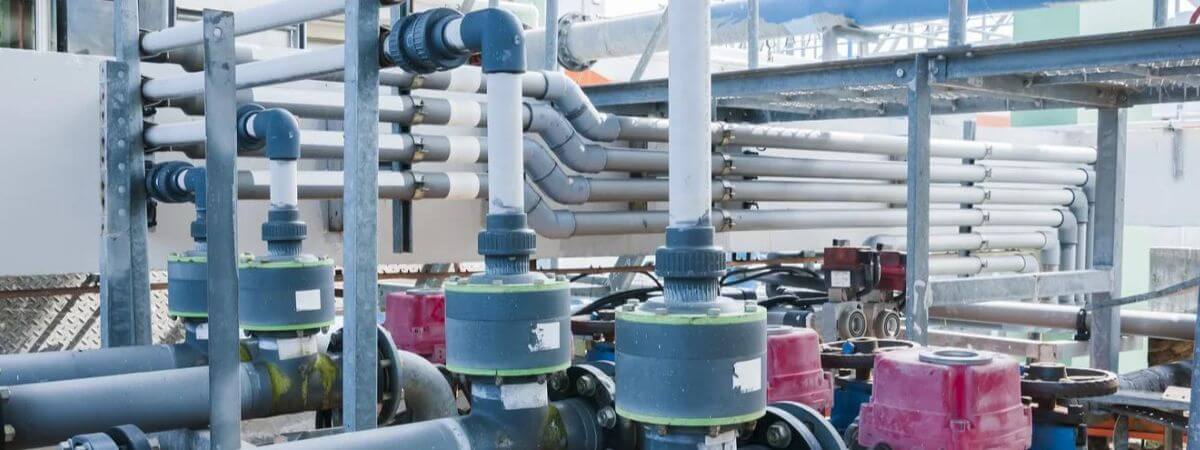The problems encountered in closed circuit systems are like those in open systems, such as scale and corrosion. However, the fixed volume of a closed system allows for water treatment products to be dosed at much higher levels than is possible in open systems, where water is constantly lost to drain.
In this blog post, we have compiled a list of our customers' most common problems when involved in the ongoing maintenance and testing of closed circuit systems. For each problem, we have identified the closed circuit chemicals that are most effective at solving for them.
Problem 1: Scale build-up
Scaling is not generally a problem in a closed circuit system unless there is substantial hard water make-up. But in the event that excessive deposits of calcium carbonate have built up within the system, an on-line descaler, such as Multitreat OL, can be added to gradually remove scale during the normal operation of the system.
Removing the calcium carbonate scale from the internal surfaces will prevent under-deposit corrosion and increase heat transfer efficiency, thus saving energy.
| Product | Activity | Details |
|
BV139 |
On-line descaler |
|
Problem 2: Elevated copper levels
If there are elevated levels of copper in the closed system, azole (a yellow metal corrosion inhibitor) may be added to maintain a protective chemical layer on top of the copper surfaces. Inhibitors that contain enough azole to protect small amounts of yellow metals within the system are most suitable.
In systems with any significant amount of copper pipework, it will be necessary to add an additional, separate yellow metal inhibitor to the system to ensure that all the yellow metals present are protected against corrosion.
B&V Chemicals’ range includes several azole supplements. Contact our technical department for guidance on which azole supplement would be most suitable for your system.
Problem 3: Foaming/champagne effect
Foaming in closed systems is rarely a problem but does occasionally occur. In most cases, foam within a closed circuit system will be caused by a combination of high flow rates and/or system design. The addition of very low doses of specialised antifoam can alleviate these problems.
| Product | Activity | Details |
|
BV5 AF 49 |
Closed Circuit Antifoam |
|
Problem 4: Reduced nitrite levels in multi-metal inhibitors due to NRB activity
If a multi-metal inhibitor such as B&V’s Polyhib CH is being used in a closed system, and testing indicates that the correct levels of Molybdate are present (i.e. >330ppm at 1%), but nitrite levels are depleted (i.e. significantly less than 250ppm), it is very likely that Nitrite Reducing Bacteria (NRB) are, or have been, active within the system.
In this case, the addition of a suitable biocide is recommended. This should be allowed to recirculate for at least a week until testing shows that total viable count (TVC) levels are under control. The addition of a neutral nitrite supplement is then recommended to bring the nitrite levels up to >250ppm as sodium nitrite. The most appropriate product for this application is the Polyhib HN5.
| Supplementary inhibitor | Composition | Details |
|
BV891 |
Nitrite based |
|
Problem 5: Extensive biofilm within a system
In some systems, adding biocide consistently fails to bring microbial numbers under control. One of the main reasons for this is likely to be the build-up of biofilm within the system. The biofilm layers protect the bacteria from the activity of biocides. As biofilm levels deplete over time, bacteria are released from the biofilm to proliferate in the system once again.
A very specific closed circuit biofilm remover can be used to lift the biofilm from the pipework surface. The additional benefit of using a bio-dispersant within a closed circuit with biofilm is that removing the biofilm from the pipework surfaces will prevent under-deposit corrosion and allow the corrosion inhibitor full contact with the metal surfaces.
There are two products effective at removing biofilm in closed circuit systems. Both should be used in conjunction with a biocide so that microbial numbers are reduced as the biofilm is removed. Bear in mind that the biofilm will inevitably go somewhere in the system on removal.
The possibility of chunks of biofilm blocking small bore pipework will also need to be considered carefully before a bio-dispersant is used. Any biofilm will likely collect in the strainers for larger diameter pipework systems with strainers. These will need to be checked and cleaned periodically after adding a bio-dispersant.
| Product | Activity | Details |
|
BV1455 Multitreat SF XTRA |
On-line system cleaner for use with filtration. |
|
|
BV167 Oilsperse 3 |
Biofilm Dispersants |
|
Summary
It is common for closed circuit systems to encounter these problems. The good news, as we’ve demonstrated in this blog post, is that they are all easy to resolve. Regular testing and close monitoring are key for ensuring issues are picked up early in order to prevent scaling and corrosion.
B & V Chemicals has a full range of scale and corrosion inhibitors, pre-commission cleaners, system flush chemicals, and biocides for use in closed circuit heating and chilled systems. Our range also contains many specialist products formulated for use in specific specialist or problematic situations.
For advice on selecting or using any of the products mentioned above, please contact our technical department. We are always available to help with advice on product selection, problem-solving and compatibility with other formulations already in use in particular systems.






